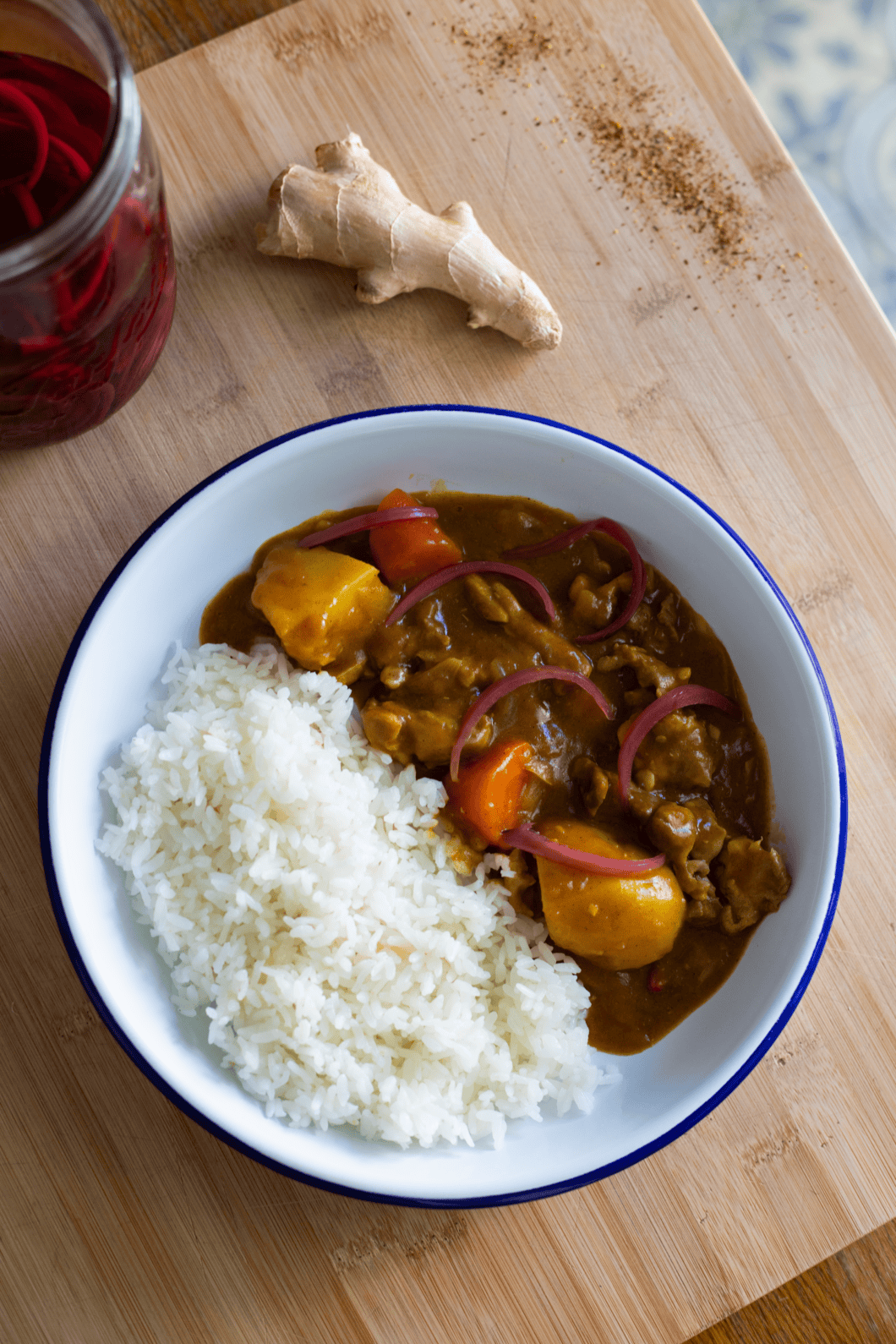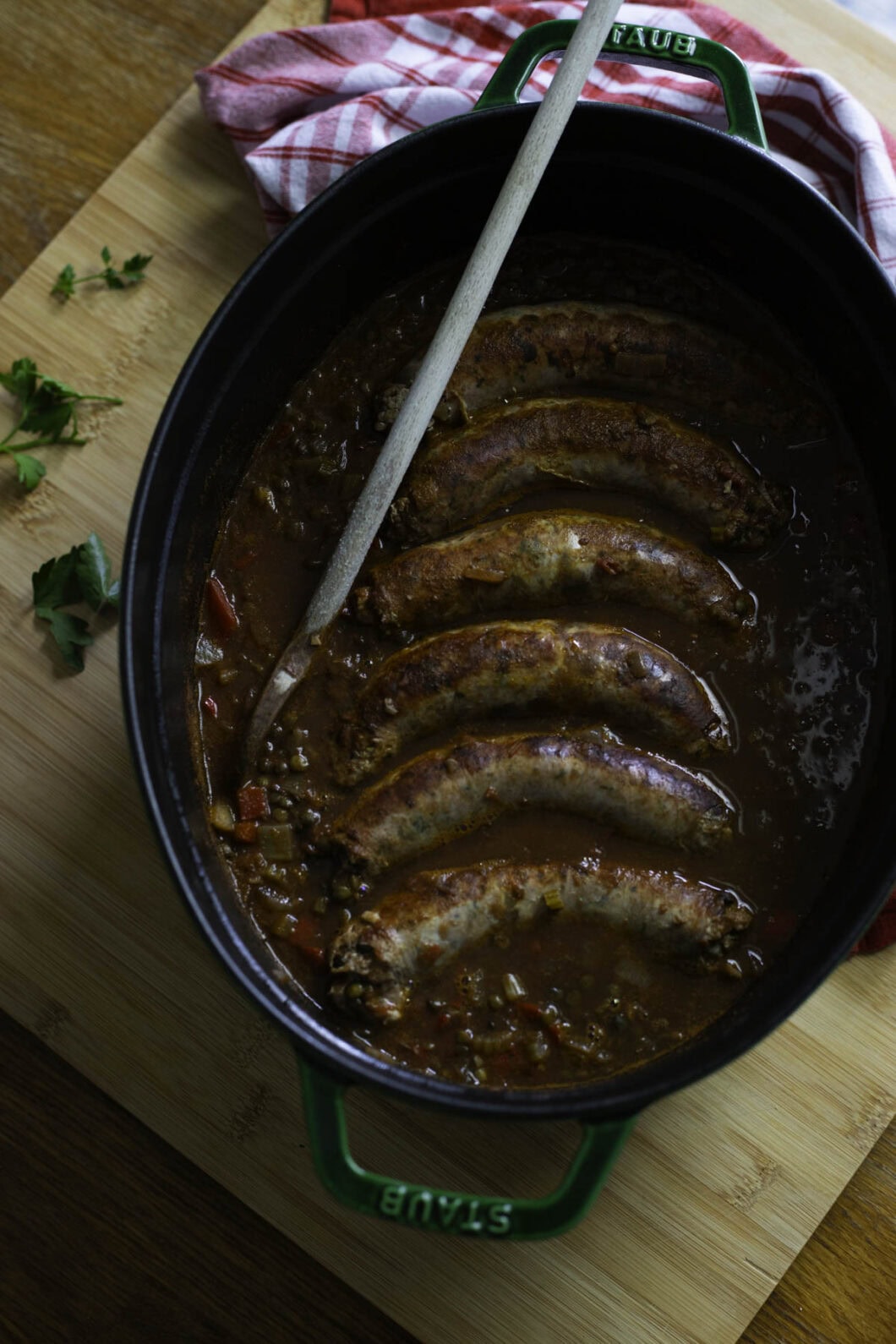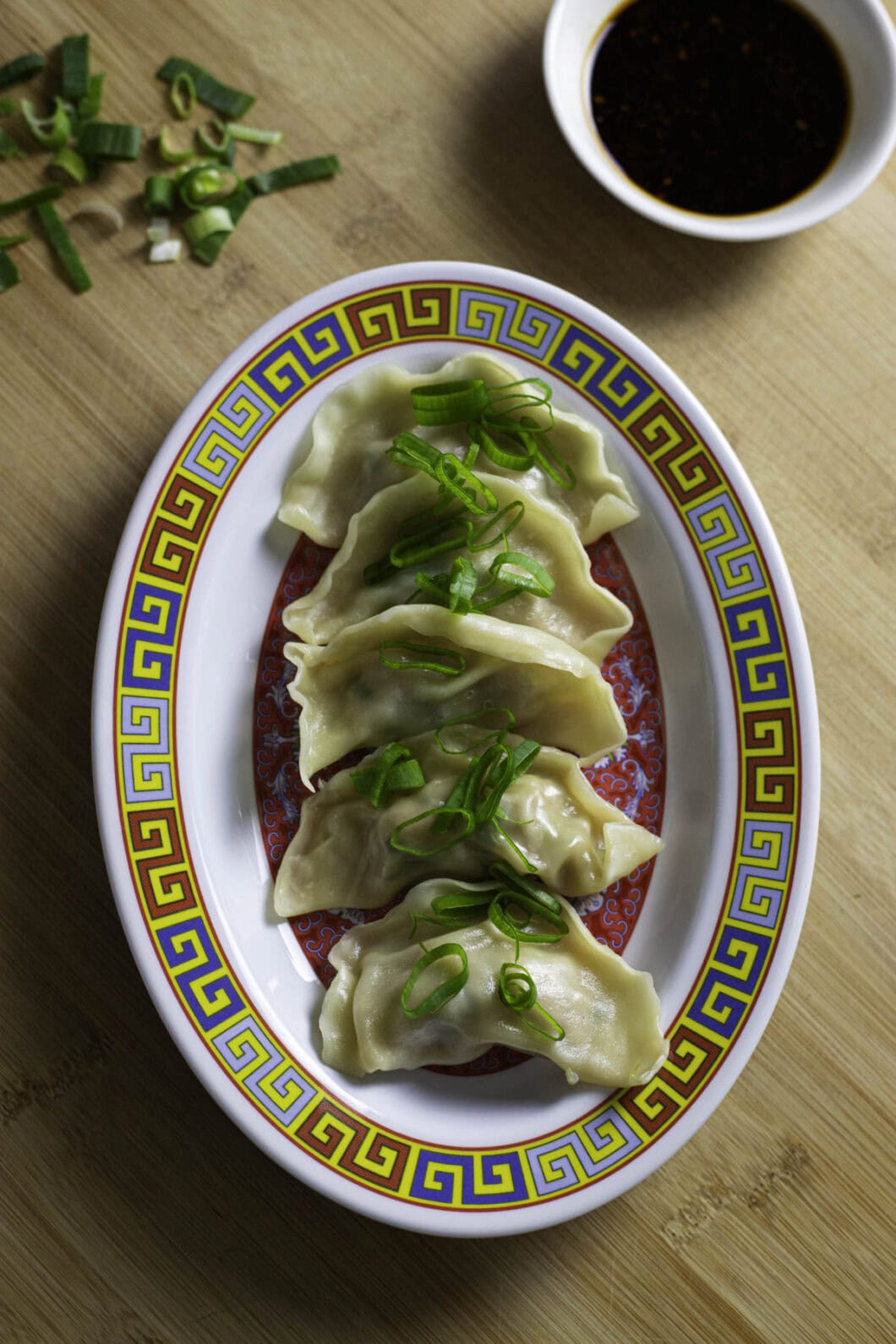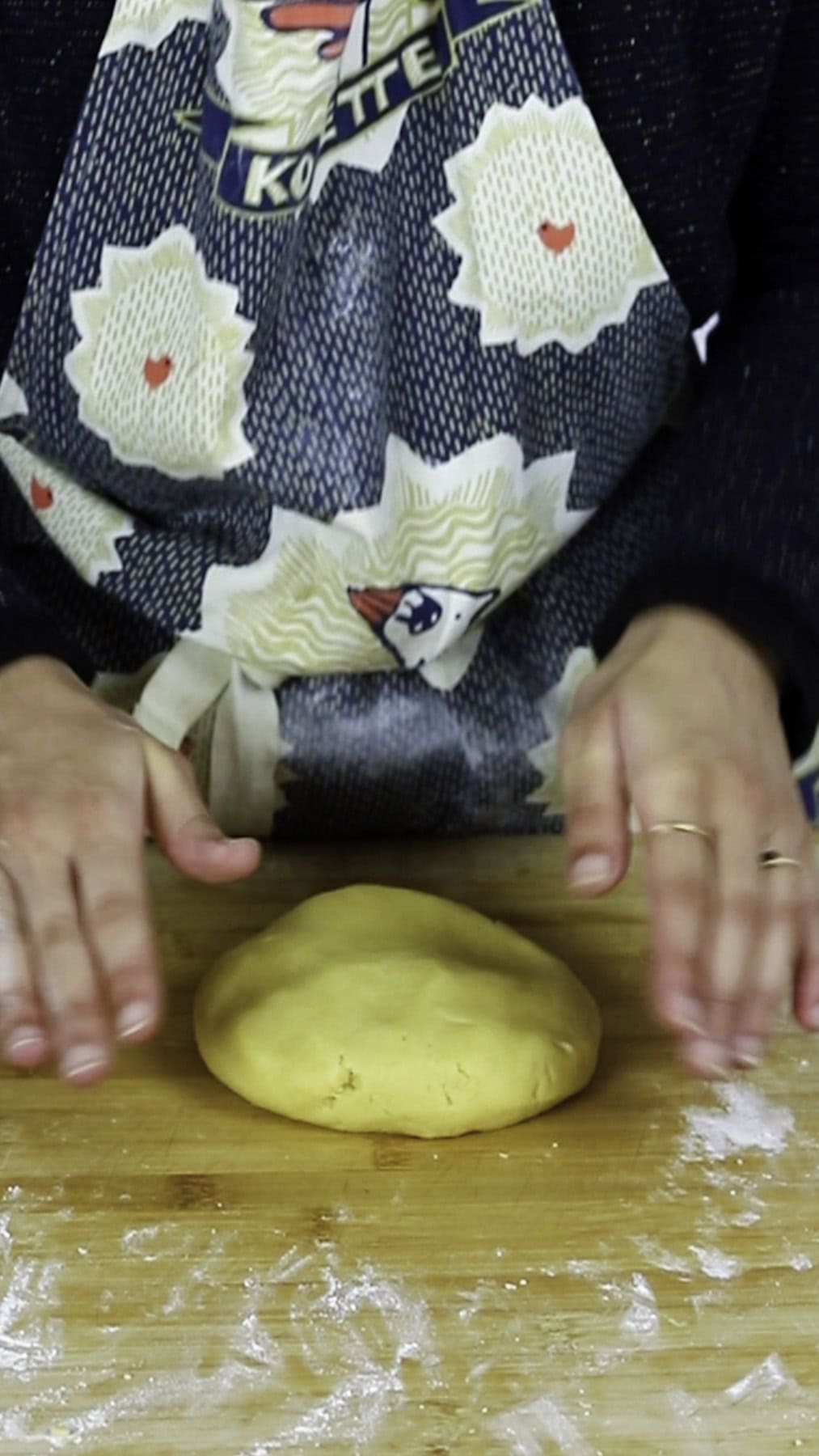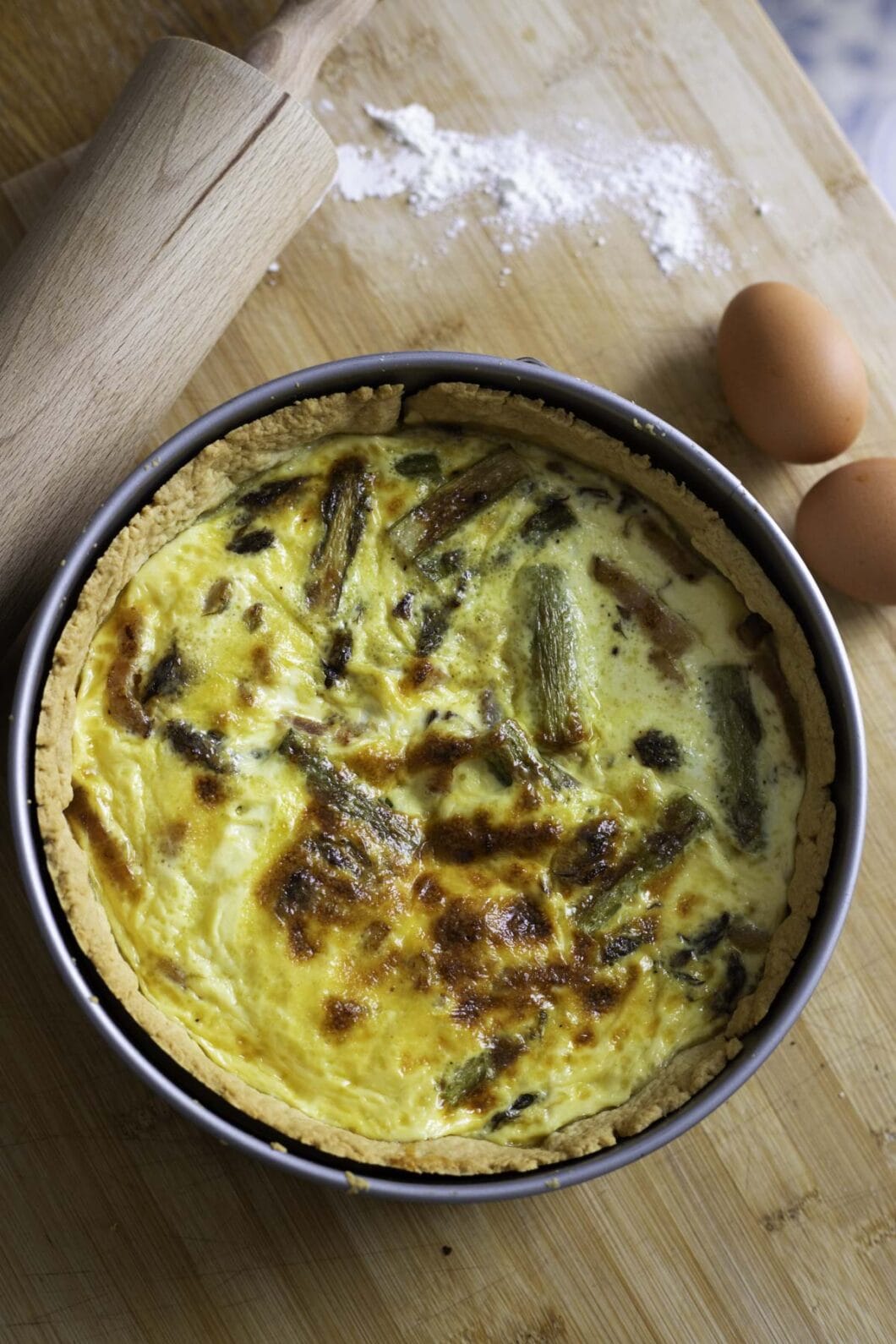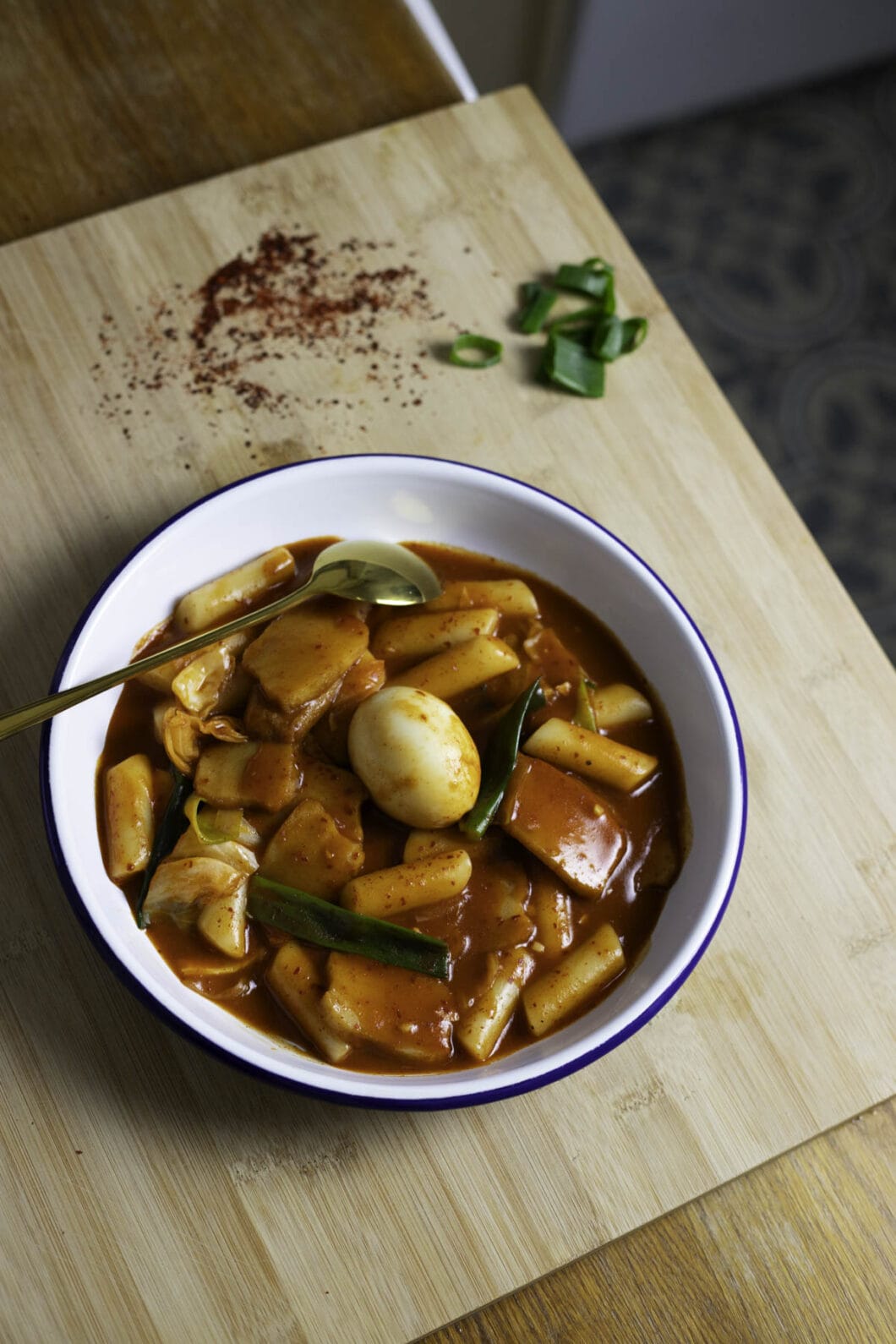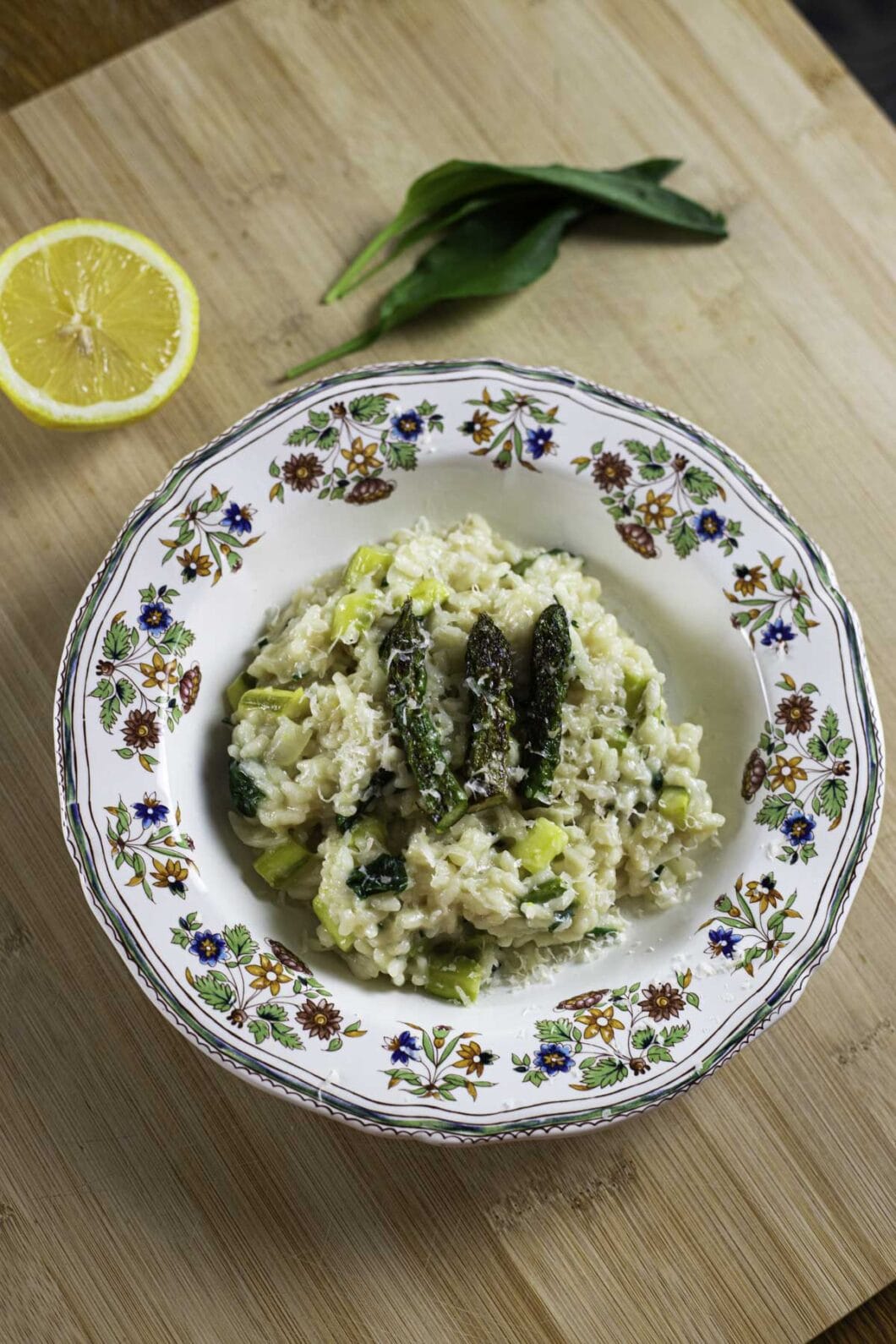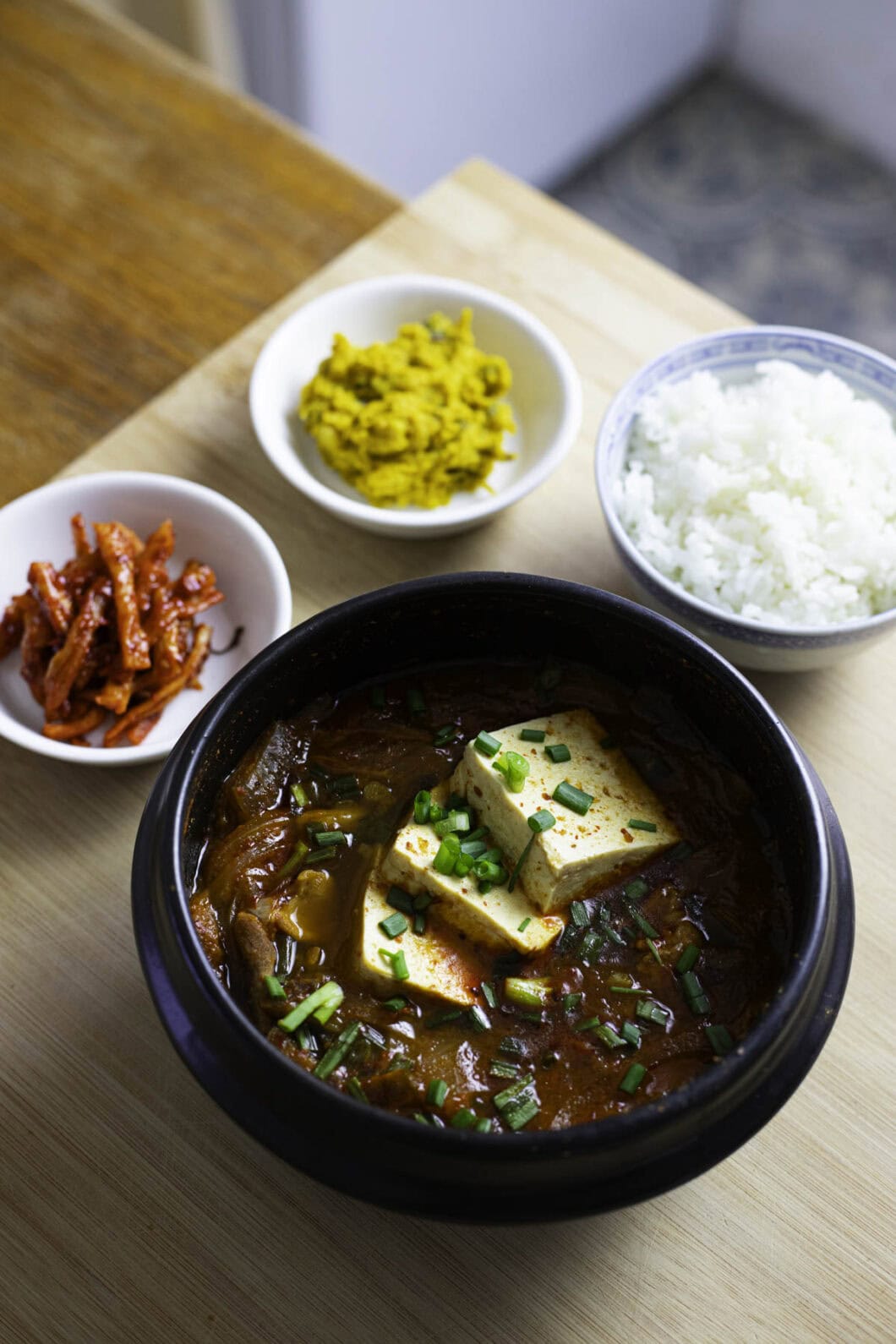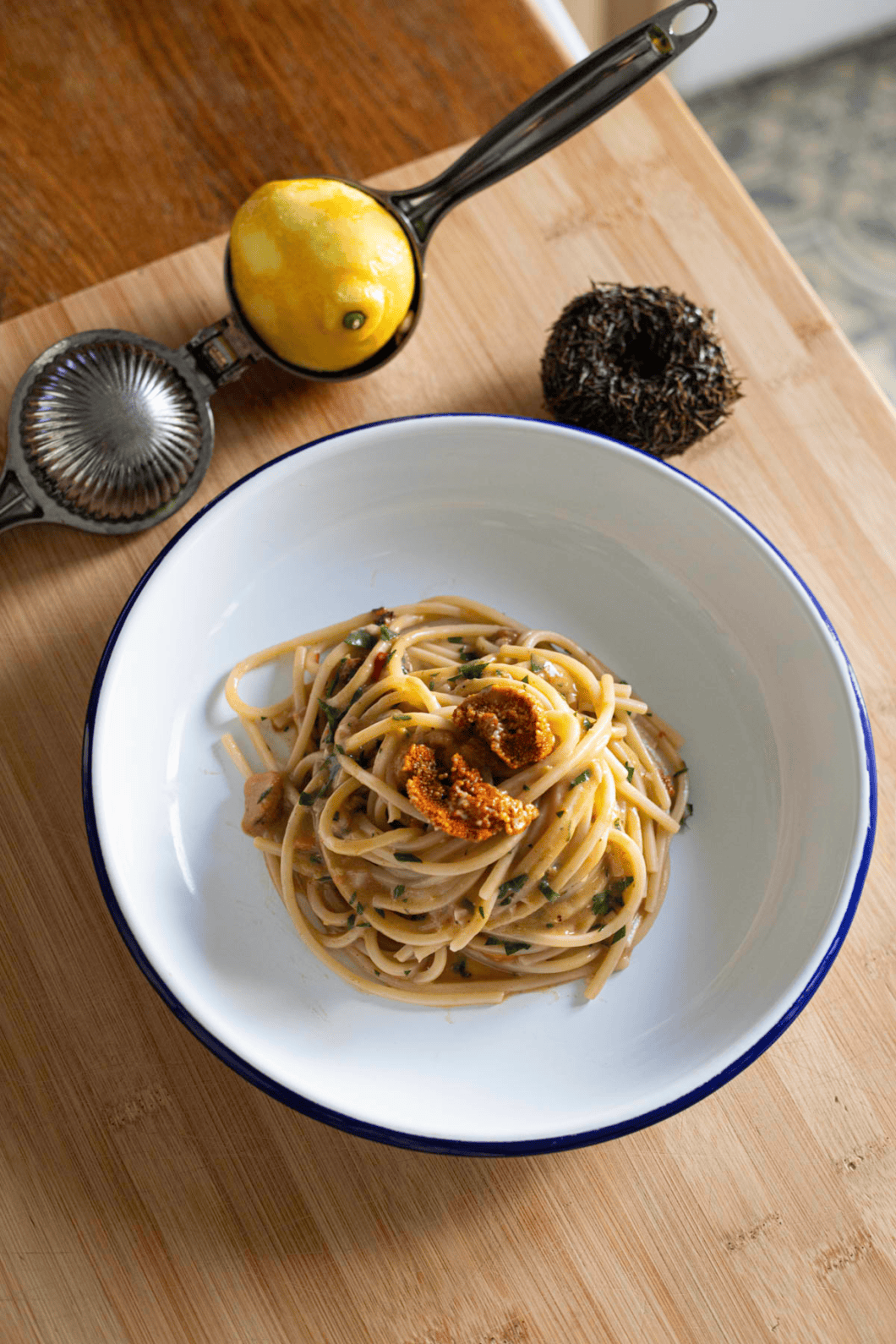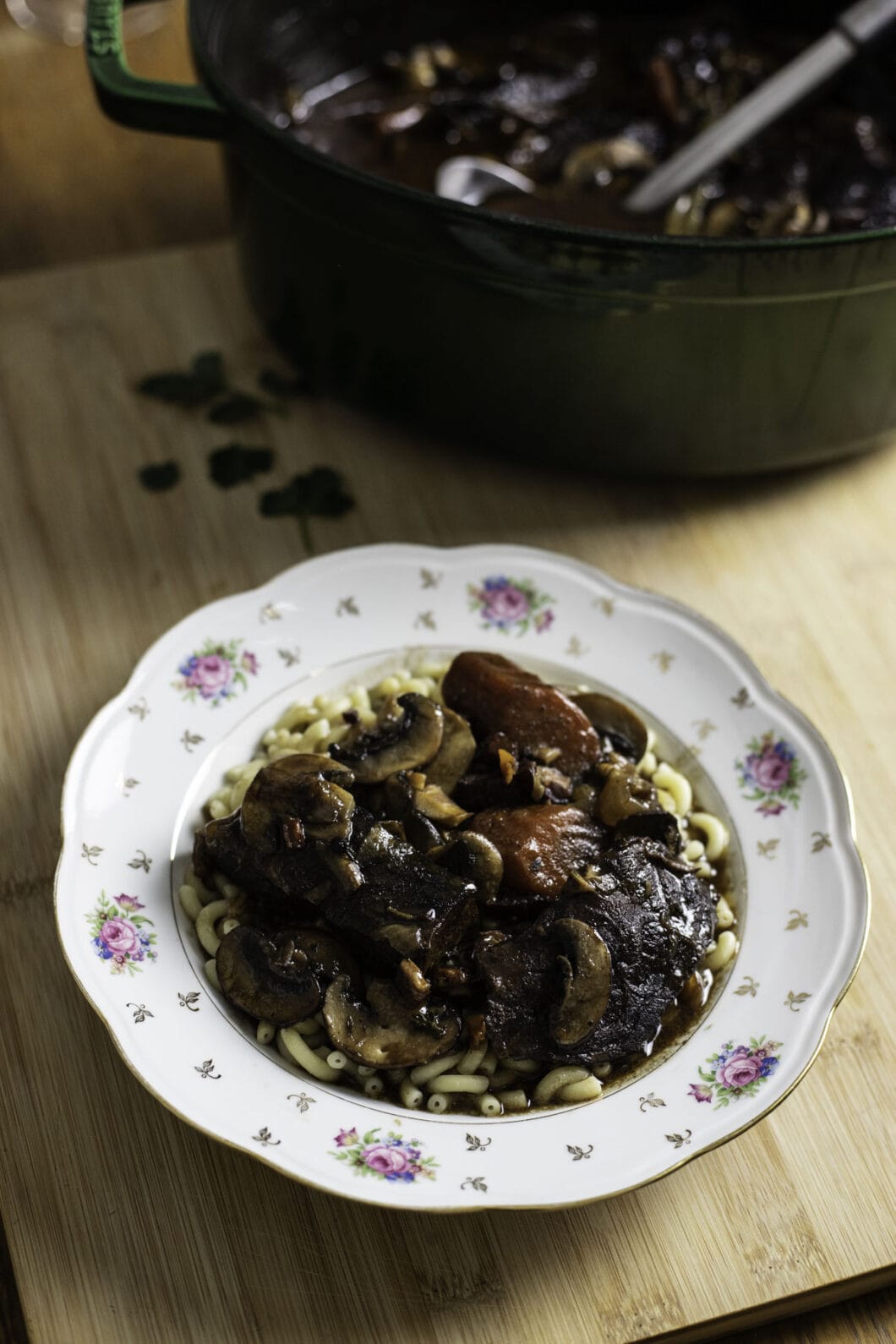I can’t believe this is my first curry recipe. I love curries ! From the Indian to the Carribean, from the Japanese to the Thaï ones, each country has its own proud and fiery spice blend -and I love them all.
I never had Japanese Kare Raisu in Japan, but I did have several in Korea, sometimes in Japanese restaurants, sometimes in Korean ones with a Korean-Japanese adaptation. You could tell it was a popular dish here, just like Jjajangmyeon, for example, of Mapo Tofu, which are beloved Korean-Chinese dishes.
Contrary to what one might think, this curry is very fragrant. You might be worried by the absence of cream or tomatoes ; fear not, this thick curry won’t let your down ! The intense orangey-brown colour reflects the intensity and depth of flavour of this curry. Without the rice to dilute the taste, it’d be too strong and salty. With plain rice though, it’s just perfect.
You can go the easy way, like I did, using boxed curry blocks, which is a popular option in Japan ; you could also make your own Roux (a mix of spices and butter) yourself, which I’ll try in the future.
Japanese Kare Raisu with Chicken – Recipe
Ingredients – Advice & key points
- Try to buy quality, deboned and skinned chicken thighs. It is important to use chicken thighs, which are juicy and tender ; the skin crisps up and caramelizes beautifully, and protects the meat from the high heat, allowing it to remain juicy. Simply ask your butcher to debone and skin it for you.
- You could use chicken breasts if you don’t mind your meat being drier, or if you watch out for your fat intake.
- Also, the quality focus makes a world of difference. I used free-range chicken thighs, and with my partner, we both said that the quality difference with restaurants items was huge.
- You’ll find boxed curries in Asian stores, or online (Amazon in a handy option here). I used S&B Golden Curry, the Hot version, which was great, but there are many popular brands that I’d recommend, too, like Vermont Curry or Java Curry.
- If you’re in Paris :
- you can go to Tang Frères in the 13th (they have other stores in Paris but be careful, some are small, this one is large) or Paris Store in the 10th ;
- ever since I moved to the 18th, I’ve been going to XP 16 or Chen Market, but those shops are slightly smaller, especially XP16, and you might not find everything you need.
- If you’re in France :
- Paris Store has several shops across the country ;
- you can also order online ! There are several online Asian websites you can order from.
- For my foreign friends : I bet you can easily find some Asian shops around you or online, but if you can’t, message me with your location and I will try to find it for you !
- If you’re in Paris :
- I used 2 Japanese cutting techniques in this recipe :
- I cut my carrot Rangiri-style. You rotate the ingredients as you cut (see video), in order to create a more open surface and reduce the cooking time ; it also gives a quite pretty shape !
- I cut my chicken Sogigiri-style. You try to cut as parallel to the cutting board as possible, so as to create here again a more open and flat surface, to shorten and homogenize the cooking time.
- Don’t have boxed curries on hand, but crave a curry ? You can make a simple Tikka Masala using more classic spices from your cupboard !
How to eat your Japanese Kare Raisu
This dish is normally served with rice and Fukujinzuke, which is mix of pickled vegetables. I simply used some pickled onions I had in my fridge here.
Since this recipe is not that short and keeps well in the fridge or the freezer, do not hesitate to make a large batch !
Let’s dig into it !


